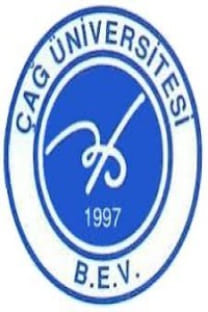Stratejik Planlama Farkındalığı İçin Bir Ölçek Geliştirme Çalışması: Güvenirliği ve Geçerliği
Stratejik planlama, algı, farkındalık, güvenirlik ve geçerlik
A Study on Developing Strategic Planning Awareness Scale: Reliability and Validity
Strategic planning, perception, awareness, reliability and validity,
___
- Aksoy, S. (2006), Stratejik Planlama Çalışmalarının Çalışanlara Yansıması: Hacettepe Üniversitesi Örneği, Yüksek Lisans Tezi, Hacettepe Üniversitesi Sosyal Bilimler Enstitüsü, Ankara.
- Andrews, K.R. (1971), The Concept of Corporate Strategy, Irwin, Homewood.
- Ansoff, H. I. (1965), Corporate strategy, New York: McGraw-Hill.
- Baron, R.A., Greenberg, J. (1990), Behaviour in Organizations: Understanding and Managing the Human Side of Work, 3. Baskı, Needham Heights, MA: Allyn and Bacon, A Division of Simon & Schuster, Inc.
- Bryson, H.M. (1988), “A Strategic Planning Process for Public and Non-profit Organizations”, Lon Range Planning, 21(1): 73-81.
- Bryson, H.M. (1995), Strategic Planning for Public and Nonprofit Organizations: A Guide to Strengthening and Sustaining Organizational Achievement, Revised Edition, Jossey-Bass Publishers, San Fransisco.
- Chandler, D. (1962), Strategy and structure: chapters in the history of the American industrial enterprise, Cambridge, MA: MIT Press.
- DPT (2006), Kamu İdareleri İçin Stratejik Planlama Kılavuzu, 2. Sürüm, Haziran.
- Eren, E. (2010), Örgütsel Davranış ve Yönetim Psikolojisi, 12. Baskı, Beta Basım Yayım Dağıtım A.Ş., İstanbul.
- Grewe, T., Marshall, J.-O’Toole, D.E. (1989), “Participative Planning for a Public Service”, Long Range Planning, 22(1): 110-117.
- Hamel, G., Prahalad, C.K. (1993), “Strategy as stretch and leverage”, Harvard Business Review, March/April: 75-84.
- Heaton, Herbert (1977), Productivity in Service Organizations: Organizing for People, New York: McGraw-Hill Book Co.
- Lehman, D.R.-Chiu, C.,-Schaller, M. (2004), “Psychology and Culture”, Annu. Rev. Psychol, 55: 689-714.
- Leontiades, M., Tezel, A. (1980), “Planning Perceptions and Planning Results”, Strategic Management Journal, 1: 65-75.
- Maund, B. (2003), Perception, Acumen Publishing Limited, Chesham, Bucks.
- Mintzberg, H. (1978), “Patterns in strategy formulation”, Management Science, 24(9):34-938.
- Mintzberg, H. (1990), “Strategy formation: schools of thought”, J.W. Fredericson (Der.), Perspectives on strategic management: 105-235. London: Harper Business.
- Morgan, C.T. (1981), Psikolojiye Giriş Ders Kitabı (Çev. Sirel Karakaş), Hacettepe Üniversitesi Psikoloji Bölümü Yayınları, 1, Ankara.
- Obeng, K., Ugboro, I. (2008), “Effective strategic planning in public transit systems”, Transportation Research Part E 44, 420-439.
- Osland, J.S., Kolb, D.A., Rubin, I.M., Turner, M.E. (2007), Organizational Behavior An Experimental Approach, 8. Baskı, Pearson Education, Inc.
- Porter, M.E. (1981), “The contributions of industrial organization to strategic management”, Academy of Management Review, 6(4): 609-620.
- Porter, M.E. (1991), “Towards a dynamic theory of strategy”, Strategic Management Journal, 12: 95-117.
- Powell, T.C. (2001), “Competitive advantage: logical and philosophical considerations”, Strategic Management Journal, 22(9): 875-888.
- Schermerhorn, J.R., Hunt, J.G., Osborn, R.N. (2000), Organizational Behavior, 7. Baskı, John Wiley & Sons, Inc.
- Shondrick, S.J., Lord, R.G. (2010), “Implicit Leadership and Followership Theories: Dynamic, Structures for Leadership Perceptions, Memory, and Leader-Follower Processes”, G.P. Hodgkinson-J.K. Ford (Ed.) International Review of Industrial and Organizational Psychology, 2010 Volume 25. Wiley-Blackwell, A John Wiley & Sons, Ltd. Publication.
- http://www.sp.gov.tr/tr/html/16/Hakkimizda/, 07.06.2010.
- No.lu Büyükşehir Belediyesi Kanunu (10.07.2004), T.C. Resmi Gazete, 25531, 23.07.2004.
- No.lu Belediye Kanunu (03.07.2005), T.C. Resmi Gazete, 25874, 13.07.2005.
- ISSN: 1304-8392
- Yayın Aralığı: Yılda 2 Sayı
- Başlangıç: 2004
- Yayıncı: Çağ Üniversitesi
Petrol Fiyatlarındaki Değişimlerin Deniz Lojistiğine Etkileri
Cem SAATÇİOĞLU, Nesli Çankiri KOLBAŞI
PSİKOLOJİK GÜÇLENDİRMENİN İŞ TATMİNİNE ETKİSİNDE ÖRGÜTSEL BAĞLILIĞIN ARACILIK ROLÜ
Abdullah ÇALIŞKAN, Köksal HAZIR
A Celil ÇAKICI, Banu Es YILMAZ
Bulanık Bir Model İle Özel Alışveriş Sitelerinin Değerlendirilmesi
Esengül İPLİK, Fatma Nur İPLİK, İ.efe EFEOĞLU
A Celil ÇAKICI, Banu Es YILMAZ
Atatürk Milliyetçiliği ve Temel Kırılma Noktası: 12 Eylül Milliyetçiliği
Esengül İPLİK, Fatma Nur İPLİK, İ.efe EFEOĞLU
Konaklama İşletmelerinde E-Pazarlama Uygulamaları: E-Medya Araçları Temelinde Bir Model Önerisi
Mehmet Cihan YAVUZ, Murat İsmet HASEKİ
PSİKOLOJİK GÜÇLENDİRMENİN İŞ TATMİNİNE ETKİSİNDE ÖRGÜTSEL BAĞLILIĞIN ARACILIK ROLÜ
